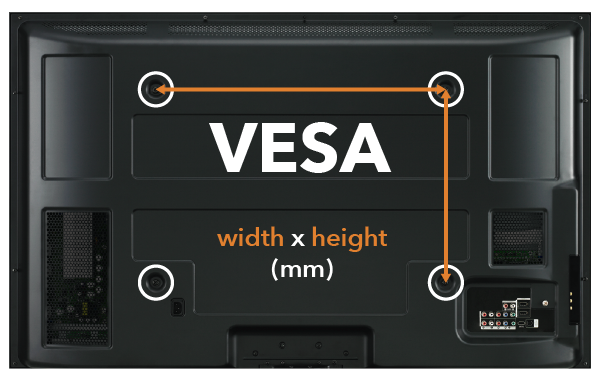Mount Functions
There are three basic TV Mount options: Flat, Tilting and Multi Position.
Flat
Choose a Flat TV Mount if you just want to get your screen up on the wall and will be viewing at or around eye level.
Tilting
Choose a mount that tilts if you are positioning your screen above eye level, or near to a light source such as a window – tilting the screen is a great way to reduce or avoid light glare and reflections.
Multi Position
Sometimes referred to as Full Motion or Articulated, these mounts enable you to push your screen flat against the wall and also pull it away from the wall and adjust to view from any angle. This is great for open plan living, large spaces, or setting a TV up in a corner.

 VESA is a term that we use commonly when referring to our TV wall mounts and some of our TV stands. It refers to the rectangular pattern of mounting holes on the back of almost all TVs, and it’s the easiest way to identify whether your TV is compatible with a bracket. Your TV’s VESA size will usually be listed in the instruction manual, or on the manufacturer’s website, or you can follow these steps to measure yourself:
VESA is a term that we use commonly when referring to our TV wall mounts and some of our TV stands. It refers to the rectangular pattern of mounting holes on the back of almost all TVs, and it’s the easiest way to identify whether your TV is compatible with a bracket. Your TV’s VESA size will usually be listed in the instruction manual, or on the manufacturer’s website, or you can follow these steps to measure yourself: